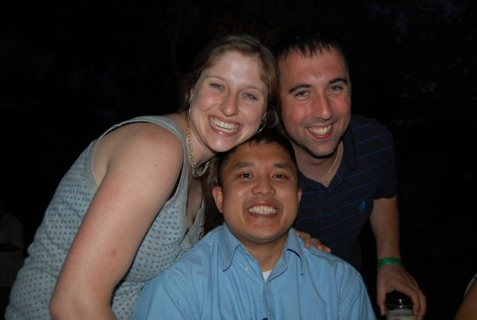I have attended university trips that have made me ponder the realities of the world, question my faith and even generate emotions I have rarely experienced. These were trips that I would recommend to any TCU student interested in the genre for which the excursion was created.
However, there is only one trip that I would dare to say should be mandatory for all students, no matter their field of interest. I say this because this trip informs its participants of the missing pieces of American history, the pieces keenly left out by those who construct the textbooks for our public school system.
Do not assume that these missing pieces are insignificant in any way. If anything, these are the pieces that represent the true American narrative. Although the given name of this excursion is the “Civil Rights Bus Tour,” I refer to this excursion as the “Civil Rights Pilgrimage” because it was a journey for moral and historical significance.
On the first day, we traveled to Little Rock, Ark., to see firsthand the trail of the “Little Rock Nine” and hear of their struggle as they integrated Little Rock Central High School. After our arrival in Memphis, Tenn., we then learned of the predicament of the sanitation workers during their efforts to unionize for better labor conditions. It was there that Martin Luther King Jr. was assassinated for his efforts to assist the sanitation workers and fight for economic equality.
In Birmingham, Ala., we visited 16th Street Baptist Church, where racism and irrational hate murdered four young African-American women in the form of a bomb blast. We also visited the Birmingham Civil Rights Institute and had the pleasure of listening to the inspiring tales of three different civil rights activists from the 1960s: Myrna Carter Jackson, Clifton Casey, and Eileen Walbert.
We then traveled to Atlanta to see King’s birthplace and to explore the famous Ebenezer Baptist Church, where King’s father and grandfather were pastors before him. It was in Montgomery, Ala., where we learned of the accomplishments and significance of the Southern Poverty Law Center and were educated at the Rosa Parks Museum hosted by Troy University.
Later that same day, we traveled to Selma, Ala., where we saw the landmark Edmund Pettus Bridge, where the first civil rights march to Montgomery was disbanded by tear gas and billy clubs on March 7, 1965, also known as “Bloody Sunday.”
In Jackson, Miss., we listened to members of the Mississippi Immigrants Rights Alliance as they discussed the discrimination against undocumented Latino workers in the state. We toured the house — which is now a museum — of famed civil rights activist Medgar Evers, who was assassinated in his home’s carport. It was there that widow Myrlie Evers-Williams arrived unexpectedly and gave me a tight hug with a warm embrace. She then recounted the story of that dreadful night.
We later ate dinner with students from a historically black college and university, Tougaloo College, while we listened to famed civil rights activist Hollis Watkins deliver his stories of work during the campaign in Mississippi. The next day we were led to the Mississippi Delta region which is host to generations of poverty.
Before our return, we thanked the Sunflower County Freedom Project and the young children in the Mississippi Delta for giving us food and shelter by volunteering to improve the learning facility.
This pilgrimage informed us of the pivotal role the Student Nonviolent Coordinating Committee and Congress of Racial Equality played in the civil rights movement that was essential for the movement to succeed. We discovered that the resolve of college students of diverse ethnicities and economic backgrounds was crucial in freeing the Deep South from generations of hatred and segregation.
Moreover, we learned that although we may see figures such as Martin Luther King, Rosa Parks and Malcolm X as the faces of a struggle for equal rights, the civil rights movement was complex and diverse and engineered by ordinary civilians to be a movement for the people and by the people.
This “Civil Rights Pilgrimage” allowed me to see a treacherous world and bravely go into the wilderness with the audacity to face whatever injustices lie waiting. Students should really take a good look at the movement and realize how it has made our nation a free land today. The tour is something everyone should experience to fully understand the importance of the civil rights movement and how it changed society for everyone today.
Alex Turner is a senior political science major from Dallas.

